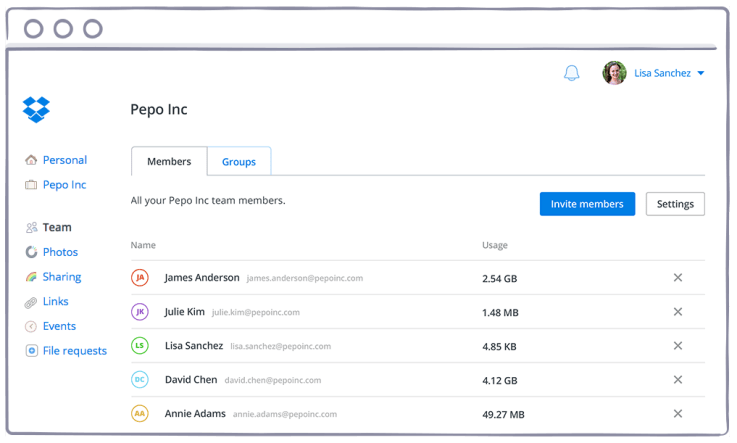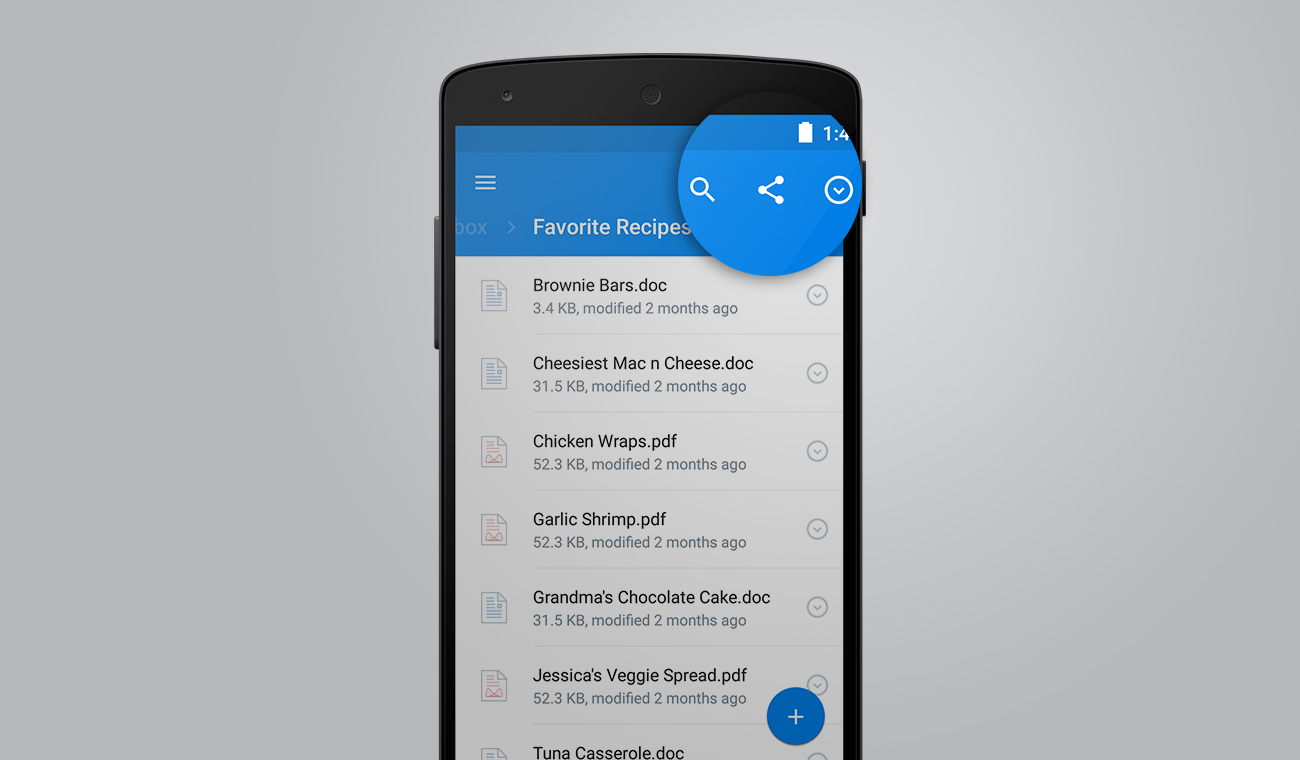As I walked into a conference room dubbed “The Mint” — a tribute to a local karaoke bar where Dropbox employees can jam on instruments — Drew Houston sat on a couch plucking a Martin Acoustic guitar.
He seemed surprisingly calm, in a casual Silicon Valley attire (black shirt, jeans and sneakers), for the CEO of a company many critics say will not live up to its $10 billion valuation. He continued playing as I sat down.
“We have a pretty good setup here,” he said as he set his guitar to lean up against the couch. “This is the jam room. It’s a Dropbox tradition.”
Houston is in a challenging position. One of the vanguards of online storage, Dropbox critics will argue the company now finds itself under attack from all sides — with companies like Apple and Google offering free online storage and companies like Box offering business collaboration tools. It has to not only continue to grow its businesses, but tell the world what Dropbox’s mission is in 2015.
Dropbox now has more than 400 million registered users — it said it had 300 million in May 2014, and hit 200 million in November 2013. It redesigned its Android application and also recently launched a tool that allows users to request files from people that aren’t on Dropbox. All these may seem like one-offs, but they are part of a broader play to provide users with tools to share, view and collaborate on files — and whatever comes after files — across every type of device.
And that, Houston says, is the crux of the company’s goal: to convince people to host their photos, their work documents — and essentially their lives — on Dropbox and give those people easier ways to connect and collaborate with each other. And it wants its users to be able to access that technology wherever they are, whether it’s through Dropbox, Gmail, Microsoft Office or any of the other integrations it has.
“There’s an element where, we want to help you tie together all these different tools you’re using without prescribing that you have to only use the stuff that we make,” Houston said. “When you also talk about competition there’s a couple fundamentally different things about our approach. With Dropbox you are free to use whatever you want.”
“When you also talk about competition there’s a couple fundamentally different things about our approach. With Dropbox you are free to use whatever you want” Drew Houston
When Houston was younger, he said he would visit his father’s workplace and be stunned by the technology in the building. It was far superior to what he and his family had at home, he said. But now it’s the complete opposite, with larger businesses often running on clunky, older hardware — like fax machines, even. It’s easier to keep up with your personal life than it is your work life, which is part of the intrigue for Houston as he and his company continue to build new products.
“Evolution doesn’t always move things forward, and it’s created all these new problems,” Houston said. “And so, we think there’s this huge opportunity, we think of what we’ve built — a lot of it is just wiring up hundreds of millions of people who have themselves brought Dropbox into millions of businesses. For them Dropbox is this collaboration platform that connects every person, every company, every ecosystem, because more and more people are in different countries and different companies and using all kinds of different technology and you have all the platform companies trying to fight each other and lock you in.”
In more direct words: Houston wants Dropbox to work regardless of what platform you’re on. All those disparate platforms drive users to services that are ubiquitous on mobile devices — which, in most cases, is email. So Dropbox seeks to also work across all those platforms.
“Yes, there are proprietary things we can build to keep people in our ecosystem, but that’s like what everyone else is doing,” Houston said. “A lot of what people love about Dropbox is that freedom that you can have anything in there, and that you know it’s ok if the person is in another company, another country. I don’t have to worry about whether they have an iPhone or not — the sharing will just work. Everything will just work. Our approach is around building the best product as opposed to artificially creating lock-in.”
That was taken another step further on Monday with a new feature that allows Dropbox users to create teams — and, effectively, a whole new Dropbox — without having to sign up for Dropbox for Business. Users were already self-organizing and using Dropbox to run their business, so the company decided to build a new tool that would help them continue to grow. The natural outcome here is that, as the business continues to grow, so will its dependence on Dropbox — which leads to them becoming a paying Dropbox for Business customer.

Dropbox also faces another challenge: entering what, with mobile devices proliferating, is essentially a post-file world. An example of that would be photos, which typically stay locked away in a smartphone’s photos application. Storing and sharing those photos is something the company has tried to tap into with Carousel, but the app never saw the runaway success that has defined other social networks. “Obviously, however many people we have using it we want ten times as many people using it, and with Carousel and Mailbox they’re both new ventures for us,” Houston said. “We’re figuring out how do you manage a portfolio of apps.”
There’s another catch, too — the notion of a file may also be slipping in the workplace as well. There are tools like Slack emerging where users can indiscriminately share pretty much anything in a communications platform. Those “files” then exist within a stream of communication, which can be found through an internal search engine, and aren’t stored, shared or collaborated on in a traditional fashion. But that’s not to say that the company isn’t thinking carefully about what the post-file world looks like, and how to tap into both the file-driven and post-file world under Dropbox.
“There are certain things that we’ll provide, like very simple tools like a shared folder or the ability to have a conversation around something, but anything that solves this problem in a fundamental way will unify the file world and post-file world,” he said. “We’ll do a lot in both areas — you want to tie together all the stuff that people are using and create a platform where you can use any ecosystem, and you want to have this sharing network where the power of Dropbox is everyone is already running on it.”
All of these challenges together have drawn up one large question among some critics in Silicon Valley: is Dropbox really a business come under sufficient attack that it’s now facing an existential threat?

Houston argues that the company has an extremely defensible business model, starting with its existing customers. Only around 1% of Dropbox’s users that use the service for business purposes are paying for Dropbox for Business — so there’s a lot of headroom to grow there, Houston said. The company’s freemium business plan — a model which has propelled many startups to billion-dollar status — has helped it break into businesses that eventually end up paying for Dropbox. And now the company is investing in acquiring larger customers, but all of them already have some connection to Dropbox, Houston said. To be sure, the enterprise acquisition sales cycle can be extremely costly, but all that taken together helps Dropbox justify its valuation, Houston said.
“They’re all extremely efficient and scalable,” Houston said. “The typical SaaS company, the drawback is, you have to hire all these salespeople and all this marketing and for every dollar you take in 50 cents goes off the top to sales and marketing, that’s just not the case here. That’s the power of the hybrid model. We have the growth characteristics of a consumer internet company but the monetization of a SaaS company. I can’t think of any other examples where that’s happened. It’s a little bit of a different species of unicorn.”
Dropbox turned 8 in May, and has definitely been busy on the recruiting front. Most-recently it hired Todd Jackson — Twitter’s head of discovery — to be its VP of product. It hired a new CFO Vanessa Wittman from Motorola Mobility in February. And Houston says that many of the founders from the companies it acquires end up finding themselves in important positions within the company. That’s an indication that the company has done a pretty good job of retaining its talent instead of acquiring the company and watching the team leave once their lockup expires. Though, to be sure, there’s also been a few departures, such as Ilya Fushman, and Gentry Underwood also stepped down.
If Dropbox were to do it all over again, Houston said that the company was fairly valued and he was happy about how he made the company’s fundraising decisions. Dropbox says it has hundreds of millions in revenue and that both of its businesses — Dropbox for Business and Pro — continue to grow fast. That’s given the company the flexibility to not have any plans to go public, Houston said, because the company has basically raised all the capital it needs. “We’ve always raised money at a pace that we feel is in line with the fundamentals of the business,” he said.
“We have the growth characteristics of a consumer internet company but the monetization of a SaaS company. I can’t think of any other examples where that’s happened. It’s a little bit of a different species of unicorn.” Drew Houston
Getting the next 100 million users won’t be easy. Dropbox’s registered user growth has slowed a bit (which, once you start hitting hundreds of millions of users, is to be expected). But Dropbox is pre-installed on basically every PC manufacturer, and works with OEMs to find ways to integrate Dropbox into new smartphones. It also has partnerships with companies like Deutsche Telekom and Vodafone. And of course, there’s the freemium aspect — users who are already on the product attracting other new users with the allure of free sharing and collaboration tools online.
With all the work he’s been doing, he’s hardly had the free time to pursue his personal projects, like learning how to kite surf and playing in a cover band. Before leaving, he leaned in to ask what I thought of Dropbox these days. I asked Houston one more time: What is Dropbox in 2015? And he reiterated what he said earlier — that it’s a space where people can “get together and do whatever’s most important to them,” and build the simplest and most powerful collaboration platform.
“Connecting any person, company or ecosystem,” Houston said. “In the 90s we kind of had that, anyone with a PC and an email address could work with anyone else with a PC and an email address. We kind of lost that, because mobile and the cloud have created this chaos with all this fragmentation and fighting. We’re all stuck duct-taping all the pieces together, and it sucks. Some of these things are like thousands of papercuts, some are big new products that need to be built. The solution involves the little and big things.”
